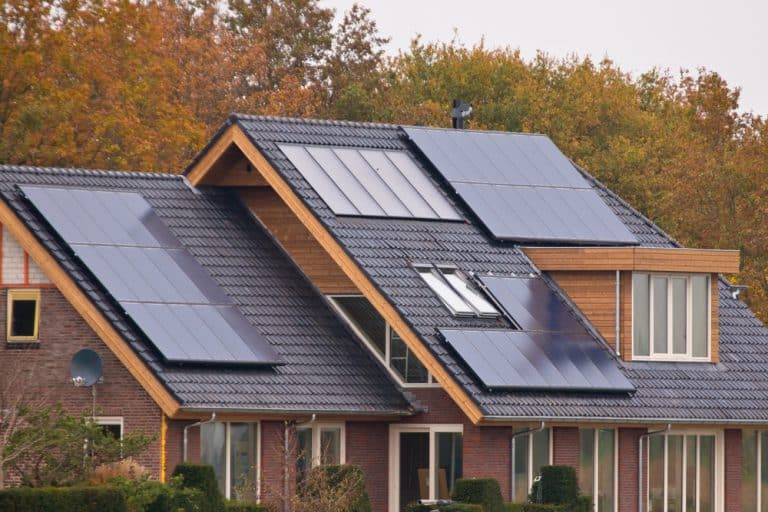Using an Uninterruptible Power Supply (UPS) with Solar

Uninterruptible power supply (UPS) allows electricity-operated objects like solar panels to continue running during an emergency. Typically uninterruptible power supply backs up computers and medical devices, but it also has other uses.
Since solar panels rely on sunshine, UPS for the home provides a much needed solar power supply. UPS options, such as solar-charged batteries, and battery backup, can store excess solar power for later use.
Solar and Uninterruptible Power Supply Explained
Unlike a standby generator or other emergency power devices, UPS provides instantaneous power during an outage. Often this power comes from a flywheel, battery, or supercapacitors.
In residential situations, UPS frequently comes from a home battery, like the Tesla Powerwall. Often people with the Powerwall report they didn’t know about an outage until they talked to their neighbors or left the house.
Having a solar-powered supply allows homes to function regardless of the weather or hour, increasing the usability of this technology. However, for many homeowners, UPS isn’t a necessity.
What Makes an Uninterruptible Power Supply Necessary
Most don’t realize it, but many Americans rely heavily on power continuity. Since UPS provides almost instantaneous power, it helps prevent data loss, business disruption, and medical issues. Most homes don’t need UPS, but certain situations, such as medical devices in the home or remote work, make UPS necessary.
Often, outages only last about 20 minutes. However, they can last several hours. When an outage lasts more than a couple of minutes, problems start to arise.
Power Outage Data to Consider
On June 1, 2020, an EIA report on utility outages showed that from 2013 to 2016, utility customers experienced between three and a half to four hours of interrupted power throughout the year. However, in 2017 and 2018, this figure skyrocketed.

In 2017 power outage averages soared to eight hours, and 2018 saw an average of 6 hours. These power outages mostly came from an increase in major events, such as storms and fires.
When outages last more than a few hours, fridges and freezers start heating up, causing problems more significant than resetting clocks. Many try to avoid blackouts with solar. However, because of the new NEC 2017 rapid shut down requirements, solar homes without battery backup also shut down.
How Solar Panels Work With UPS
Most people who purchase solar stay connected to the grid. Hypothetically, anyone could go off-grid, but ditching the utility company oftentimes isn’t worth it financially.
Staying connected to the grid allows people to install solar without battery backup. However, during a grid failure, solar arrays need to shut down due to the rapid shut down requirements.
Why?
If the system continued to run, electricity would flow through the power lines and potentially injure linemen working on the problem. However, solar customers with UPS can seamlessly power their homes during an outage with less storage than an off-grid system needs.
Go Solar Group Battery Backup Options
Go Solar Group carries three levels of battery backup. While only level three, the Tesla Powerwall, counts as UPS, each level covers a variety of customer needs.
Which one to purchase depends on the customer’s situation. Homeowners with jobs or medical devices that need power at all times need to invest in UPS. Homeowners who can wait a few minutes to plug essentials into a battery may prefer our other battery backup options.
Level 1 Battery Backup: Portable Solar Generator
Go Solar Group’s level 1 battery backup option gives solar customers the choice of either the Yeti 1400 or the Yeti 3000—wheeled lithium-ion batteries. It also comes with a portable solar panel so they can charge the battery in any situation. This option can provide power for essentials to people without the immediate need for UPS and have a limited budget.
Level 2 Battery Backup: Increased Storage Capacity with Tanks
The addition of up to four Goal Zero Tanks differentiates level two from level one of Go Solar Group’s backup levels. Tanks attach to a Yeti battery, creating a battery bank. The bank of batteries provides more power for homes with higher essential needs.
Level 3 Battery Backup: Tesla Powerwall
Level three includes the installation of the Tesla Powerwall—one of the best home batteries. With it, individuals can power part or all of their homes and seamlessly interchange between the solar array, the grid, and the home battery.
Home batteries also store more excess solar power that would otherwise go on the grid, safeguarding against rising net metering rates. While not every situation needs UPS, it’s wise to have some sort of backup for your solar-powered home.



Send a Message
Oops! We could not locate your form.